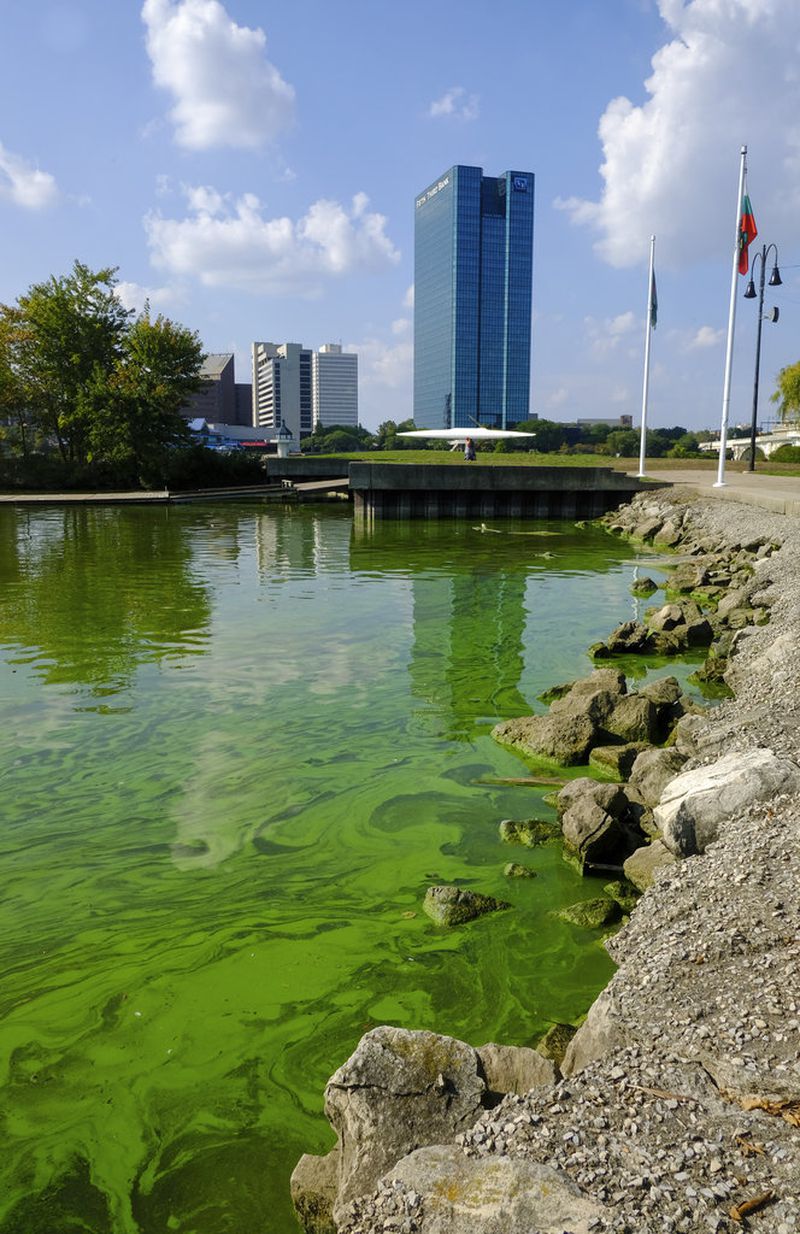Hundreds of square miles of western Lake Erie are covered in a shockingly green, slimy algae bloom that's hurting tourism and causing anxiety for lake-area residents.
These massive algae blooms are becoming an annual occurrence in the lake mainly because of farmland fertilizer run-off, according to the New York Times.
Credit: Jeremy Wadsworth
Credit: Jeremy Wadsworth
Last week's huge bloom occurred in an area of the lake bordering Michigan and Ohio. Although the algae can produce a toxin, like it did in 2014 when the city of Toledo, Ohio declared a state of emergency over contaminated drinking water, the bloom this year did not produce high levels of toxins, scientists told the Times.
"Excess nutrients," in the fertilizers used by Ohio farmers, the newspaper reported, runs into rivers that feed in to Lake Erie, causing the massive blooms.
Millions of people rely on Lake Erie for their drinking water.
The Times said officials are testing the waters to make sure it's still safe for human consumption.
The Toledo City Council delayed a vote on Tuesday to declare the western basin of Lake Erie impaired, according to the Toledo Blade. Such a declaration would help fund clean-up and research on the algae blooms.






